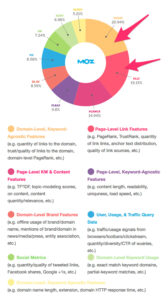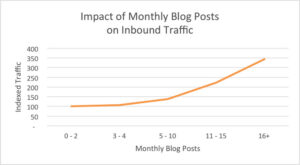Irrespective of our experience level as digital marketers, we all make digital marketing mistakes.So, it’s not surprising that while running various digital marketing campaigns, we tend to make certain mistakes that may cost us dearly.
As a matter of fact, mistakes are part and parcel of our growth journey.However, it’s not how we make mistakes but how we correct them that define us.Be that as it may, this article will cover 4 most common digital marketing mistakes that digital marketers can avoid falling into with regards to future marketing campaigns.For this reason, let’s understand them one by one:
1. Using Too Many Social Media Channels
Social media marketing shouldn’t be ignored by modern marketers.No digital marketer will argue on that.First, take a look at this informative info-graphic on social media marketing statistics in 2017.
However, most of the businesses jump on every newly-launched social media channel in the market.This decision harms business in two ways:
One – Adding new social media channels without a concrete content strategy won’t help your brand. Instead, it will harm it further thanks to your inability to post engaging content on a consistent basis.
Two – Managing social media channels is a time-consuming job. More channels mean more time investment.
Can you see the difference between managing 3 social media channels and 7 social media channels?
The fact is –
There’s no rule that says you have to have a presence on each and every social media network, however.
So, focus on the quality and relevance because quality wins over the quantity.Ask yourself three questions when choosing social media channels:
- Is this channel relevant to your brand?
- How much ROI would you get from a certain social media channel?
- Can you manage them with engaging content consistently or not?
You should only use the networks that are the best fit for your customers and your business.PERIOD.
2. Fetching Backlinks in Abundance
For the uninitiated, here is the explanation:The links on your website may direct your users to other websites that they may find interesting or important. These are called outbound links.
Backlinks on the other hand are the links on other websites that direct their users to your website.Every digital marketer wants backlinks – and lots of them.After all, backlinks are important for search engine rankings.
The weighting of thematic clusters of ranking factors in Google:
Source: The Beginner’s Guide to Link Building
Now, many marketers believe that when it comes to backlinks – it’s always a case of ‘more the merrier’.I wish that was true.It was a very handy tactic a few years back, but not anymore.Today’s truth is – quality conquers quantity in this case too.To all popular search engines (Google, Yahoo, and Bing), only quality backlinks matter.‘What are high-quality backlinks?’, you may ask.
A Backlink is considered of high-quality if it comes from a site which have relevance and higher domain authority and higher page authority.
When a search engine measures your site’s overall SEO quality, it provides great importance to links directing to your website.Search engines look at everything surrounding the link including its content, relevance of the page, and relevance of the website as a whole.A high-quality backlink will pass its juice to your website – in simple words, pass on its credibility to your site.More credibility means a higher ranking in the search engine results pages (SERPs).
On the contrary, low-quality backlinks lack credibility hence they are unable to pass on any link juice to your site.Having lots of low-quality backlinks may make search engines believe that you’re trying to manipulate the search rankings by using spammy link building activities.Having too many low-quality backlinks can even get your site penalized or banned by search engines.
How to determine which links to pursue and which to leave?
Here are three overarching categories to consider when evaluating link quality:
Relevance
Think about why would a particular site link to you?If your answer doesn’t offer a great explanation, then drop that backlink from your list.Links without relevance are considered manipulative.But if the answer is compelling enough like both sites share the same niche, related field orIf you get a backlink from a relevant website that is associated with your niche in some or the other way, then that will be a great endorsement for your site.
Domain Authority
Domain Authority (DA) is a search engine ranking score developed by Moz that predicts how well a website will rank on search engine result pages (SERPs).
Domain authority is a measure of the power of a domain name and is one of many search engine ranking factors. Domain authority is based on three factors:
- Age
- Popularity
- Size
DA is a ranking calculation created by SEOmoz and is intended to calculate the relevance, authority, and how likely the website is to rank for its given keywords. This metric is derived from the root domain of the website and not any specific page. It is very important to be observant of this.
Page Authority
Page Authority (PA) is a score developed by Moz that predicts how well a specific page will rank on search engine result pages (SERP).Page authority is a term that was first introduced by MOZ which is in fact the estimated ranking capacity of a web page.
Page Authority scores range from one to 100, with higher scores corresponding to a greater ability to rank.A high-quality backlink will have a score >70, the medium quality will be 24-70, and low quality is <24.I advise you to focus on getting quality backlinks and ignore the low-quality spammy links.That will do the job for you.
3. Missing On Content Marketing
Design is the body and content is the soul of your marketing campaigns.That’s why quality content is at the core of every digital marketing component.
“Content marketing is the only marketing left.” – Seth Godin
What is Content Marketing?
Content marketing is a marketing strategy that revolves around the creation, publication, and distribution of content to a target audience in order to bring new traffic (and therefore new customers) to your business.
‘A type of marketing that involves the creation and sharing of online material (such as videos, blogs, and social media posts) that does not explicitly promote a brand but is intended to stimulate interest in its products or services.’ – Content Marketing Institute
So it’s understood that you need to create lots of content and you might be doing that in the form of blog posts, social media campaigns, infographics, videos etc. But that’s not enough.As you can see the screenshot below:
However, the problem lies with not marketing that content properly with a cohesive content strategy.Create a content marketing strategy that covers the key pillars of your messaging:
- Customers’ needs, pain points and challenges
- Industry POVs, trends and innovations
- Latest product /solution insights to inform and educate the customers
The best thing about using a content marketing strategy to drive your overall marketing is – your messaging and brand positioning will be consistent across all channels.
Coca-Cola, for example, spends more money on content creation than it does on television advertising. ( Contently)
Once you have defined your key content marketing objectives, you can start producing content based on the marketing channel and promoting it effectively.
94% of small businesses , 93% of B2Bs , and 77% of B2Cs use content marketing.
To make your marketing a huge success, first, you should focus on creating lots of quality content. The more content you create and share with your target audience, the easier it is for you to establish your thought leadership and domain authority in your niche.Companies that publish 16+ blog posts per month got almost 3.5X more traffic than companies that publish between 0-4 monthly posts.
However, you ensure that you deliver the quality content only as your customers seek right information that can help them make an informed decision.Google can penalize you for delivering ‘Thin Content’.Thin content is defined as that with little or no value to searchers.So, don’t compromise on quality.Watch this video demonstrating content marketing in action:
4. Focus on the Wrong Metrics
Today, marketing is all about numbers and analysis.And digital marketing provides you these tangible and traceable numbers in abundance.The volume of traffic, Page sessions, Bounce Rate, Click Through Rate, Conversion Rate, Average Order Value, Live Chat sessions, Number of Downloads, Total Sales, Lifetime Value, etc.That’s a gold mine.
Digital marketers need to deliver better ROI, predictability, and profitability.However, many marketers fail mainly because they focus on wrong/irrelevant/outdated metrics.
Image Source: 360 Partners For example, if you are focusing on the number of (increased) e-book downloads but your ‘free-trial sign-ups’ ratio or ‘Request for Demo’ rate has come down, you should worry.Therefore, it’s obvious that more downloads mean more subscribers but at the end of the day, higher demo requests and better conversion rate is going to be the key performance indicator.
50% using leads and sales metrics as their key performance indicator. – TrackMaven
However, some people get worried about being unfollowed on social media.
I would say – it’s good for you.
I get unfollowed every single day. And it’s a good thing!The answer is simple – if someone unfollows you, it means he/she doesn’t connect with your brand anymore.So, focus on engaging people who are interested in your product rather than worry about who isn’t.
51% of small businesses are still primarily focused on page views, and 8% don’t measure the success of their social campaigns at all. – Simply Measured
Besides, some of the marketers fall in the trap of focusing on too much data. They try to cover all kinds of data.Avinash Kaushik has explained this problem in one of his blog posts on Web Reporting vs Web Analysis.By and large, try to get more insights from a few key metrics to improve your marketing strategy.
Learn to connect dots and find out patterns that can help you achieve your key business goal(s).You can track multiple metrics but stay focused on your most important metrics which drive revenue and business growth.For that, you need a clearly outlined high-level goal and low-level marketing objectives.
Wrap Up
In my opinion, digital marketing in the 21st century is all about doing lots of testing/experimentation. Presumably, experimentation demands precious time, energy, passion, and money. In any case, as a digital marketer, you can’t afford to waste any of these. First and foremost, stay open, stay adaptable. Don’t repeat digital marketing mistakes – especially, avoid making these common mistakes to succeed as a digital marketer. Hope you’ve enjoyed this post.
Are you all sorted on the common digital marketing mistakes discussed in this blog post?
Do you have any other digital marketing mistake/folly to share (that you used to commit)?
Is there any digital-marketing tactic(s) you’re still using despite it being not that effective anymore?
Above all, I would love to know your thoughts.So, share your opinion(s) in the comments section below or tweet me @iamnitinmalik.






